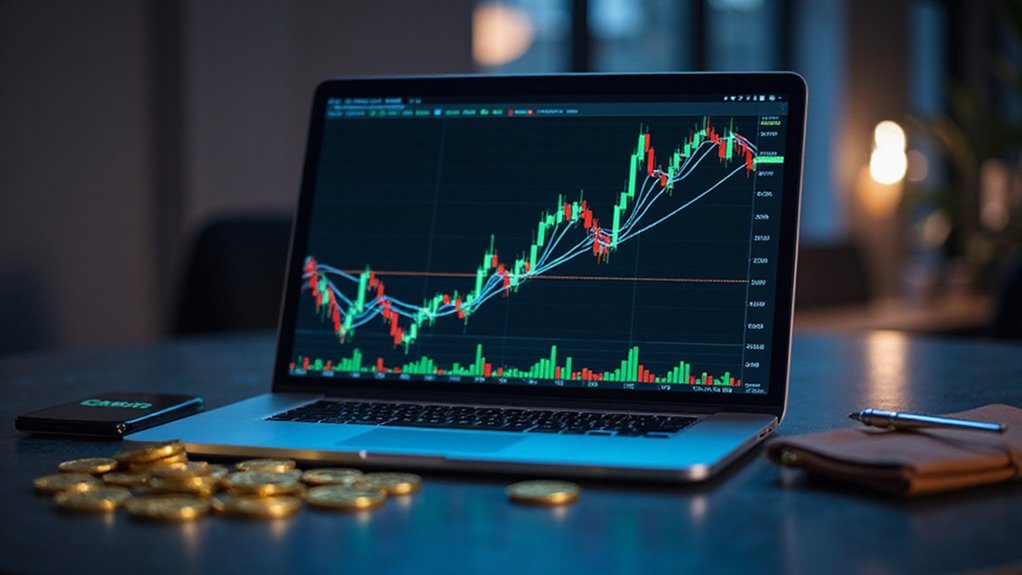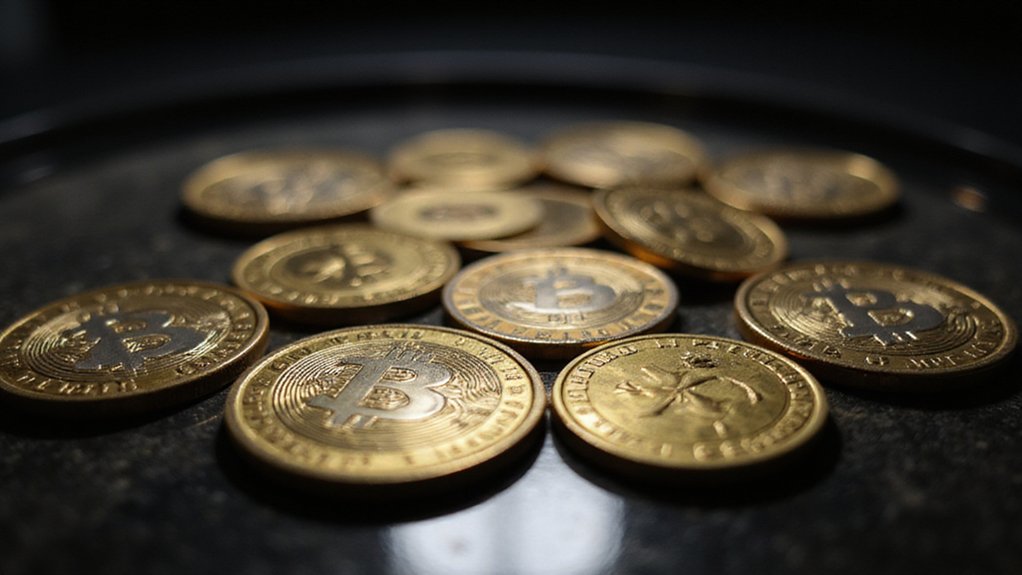Market depth measures a cryptocurrency’s capacity to absorb substantial trading volumes without triggering violent price dislocations—the fundamental distinction separating institutional traders from retail participants who treat digital assets like volatile lottery tickets. This liquidity metric emerges from aggregate buy and sell orders across various price levels, creating what economists generously term “orderly markets” despite flash crash vulnerabilities. Professional traders analyze depth charts and order books to identify genuine support and resistance levels, while retail investors chase arbitrary technical patterns lacking academic scrutiny. Deep markets enable institutional-sized trades without dramatic price swings, whereas shallow markets transform routine transactions into market-moving events with punishing bid-ask spreads. Depth fluctuates based on economic events, regulatory announcements, and algorithmic liquidity providers’ movements—factors that reveal far more about market structure than surface-level price movements suggest.

The concept of market depth—a market’s capacity to absorb substantial trading volumes without triggering dramatic price swings—represents one of those deceptively simple metrics that separates sophisticated cryptocurrency traders from those who treat digital assets like lottery tickets.
While retail investors obsess over price predictions and technical patterns that wouldn’t survive academic scrutiny, professionals quietly evaluate the underlying liquidity infrastructure that determines whether their positions can actually be executed profitably.
Market depth emerges from the aggregate volume of buy and sell orders distributed across various price levels, creating what economists euphemistically call “orderly markets” (though anyone who’s witnessed a cryptocurrency flash crash might question that terminology).
This distribution, visualized through depth charts and order books, reveals the market’s true character beyond superficial price movements.
A deep market suggests sufficient liquidity to accommodate institutional-sized trades without causing the violent price dislocations that regularly humble overconfident traders.
The practical implications extend far beyond theoretical market microstructure.
Shallow markets—those lacking adequate order volume—transform routine transactions into potential market-moving events, creating an environment where liquidity providers can effectively hold traders hostage through wide bid-ask spreads.
Conversely, markets with substantial depth offer traders the luxury of executing strategies without inadvertently becoming the catalyst for their own failure.
Professional traders leverage depth analysis to identify support and resistance levels that actually matter, rather than relying on arbitrary technical indicators.
The concentration of orders at specific price levels provides genuine insight into market sentiment and potential price behavior, particularly during periods of heightened volatility when emotional decision-making typically overwhelms rational analysis. Traders often place limit orders at these critical price levels to ensure they buy or sell only when their preferred pricing conditions are met, providing better execution control in volatile cryptocurrency markets.
Market depth fluctuates based on numerous factors: economic events that send participants fleeing to perceived safety, regulatory announcements that either legitimize or threaten specific cryptocurrencies, and the mysterious movements of liquidity providers who appear and vanish with algorithmic precision. This market data reveals the Volume at Stake that represents the total executable order volume available on exchange order books at any given moment. The depth of market serves as a liquidity indicator, with higher order volumes at various price levels typically signaling more robust market liquidity.
Understanding these dynamics requires moving beyond simplistic price charts toward thorough market structure analysis—a distinction that often determines whether traders profit from cryptocurrency volatility or become another cautionary tale about the perils of treating complex financial instruments like casino games.
Frequently Asked Questions
How Does Market Depth Differ Between Centralized and Decentralized Cryptocurrency Exchanges?
Market depth on centralized exchanges benefits from sophisticated order matching algorithms and concentrated liquidity pools, enabling substantial trades with minimal price impact.
Decentralized exchanges, conversely, rely on automated market makers and fragmented liquidity—resulting in thinner order books that struggle absorbing large transactions.
While CEXs maintain tighter bid-ask spreads through professional market makers, DEXs often exhibit wider spreads and increased slippage, particularly during volatile periods when liquidity providers withdraw capital.
What Market Depth Indicators Should Beginners Focus on When Starting Crypto Trading?
Beginners should prioritize bid-ask spreads (narrow indicates healthy liquidity), order book imbalance ratios, and volume concentration at key price levels.
The steepness of depth curves reveals how drastically large orders might move prices—crucial intel for position sizing.
Unlike the centralized exchanges we discussed earlier, these fundamentals remain consistent across platforms, though novices often fixate on flashy indicators while ignoring the elementary spread dynamics that actually determine execution quality.
How Do Whale Trades Impact Market Depth in Low-Cap Altcoins?
Whale trades devastate low-cap altcoin market depth with surgical precision, instantly vaporizing order book liquidity and creating price spreads that would make traditional market makers weep.
These behemoths—operating in markets thinner than tissue paper—can trigger flash crashes or euphoric pumps with relatively modest capital, while their spoofing tactics and artificial walls manipulate sentiment among retail traders who inevitably follow like lemmings into increasingly volatile swings.
Can Market Depth Data Be Manipulated by Exchanges or Large Traders?
Market depth data faces manipulation from multiple vectors—exchanges inflate volumes through wash trading while large traders deploy spoofing tactics, placing phantom orders they never intend to execute.
These practices create artificial liquidity illusions, particularly problematic given crypto’s regulatory vacuum.
Sophisticated detection requires cross-referencing blockchain data with order book patterns, though enforcement remains inconsistent.
Traders must scrutinize multiple sources, as relying solely on exchange-provided depth metrics invites costly misjudgments.
What’s the Minimum Market Depth Needed for Safe Large-Volume Cryptocurrency Trades?
The minimum market depth should exceed the planned trade volume by at least 5-10x within reasonable price ranges (typically 5-10% from mid-price) to avoid catastrophic slippage.
Large trades should represent under 10-20% of available cumulative liquidity—though given crypto’s notorious volatility, even seemingly adequate depth can evaporate faster than morning dew.
Smart traders monitor bid-ask spreads, order book persistence, and employ incremental execution strategies when depth appears insufficient for their ambitions.









